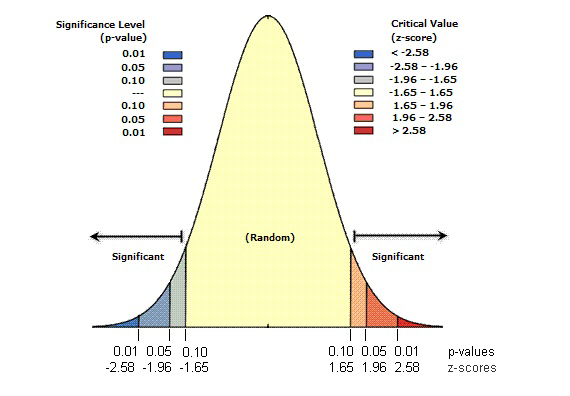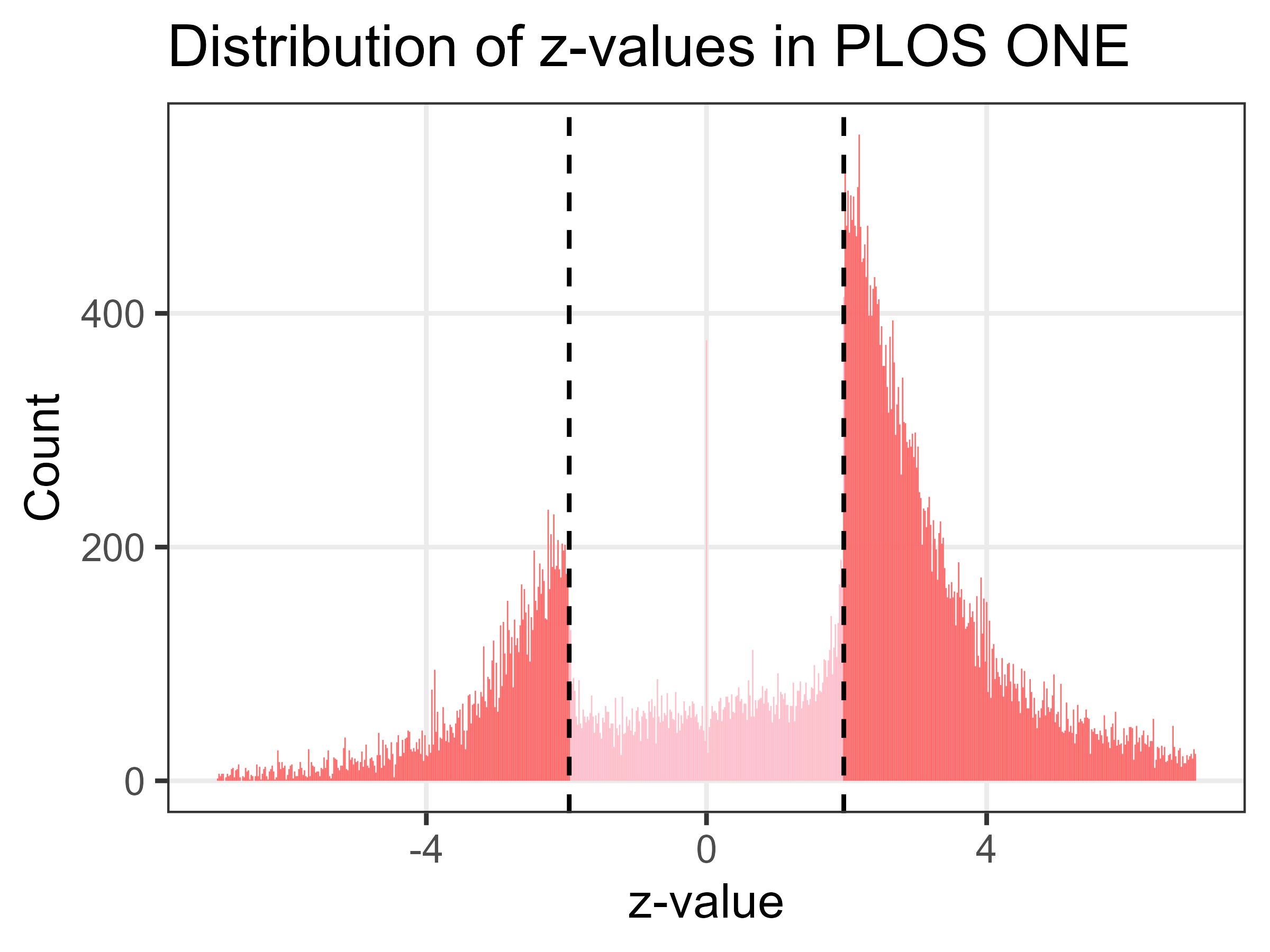The linked tweet in turn links to Adrian Barnett's blog post: https://medianwatch.netlify.app/post/z_values/
The two large spikes in Z-values are just below and above the statistically significant threshold of ± 1.96, corresponding to a p-value of less than 0.05. The plot looks like a Normal distribution that’s caved in.
From my limited statistical understanding, the Z value measures standard deviations compared to the null hypothesis. This page on statistical analysis says:
Often, you will run one of the pattern analysis tools, hoping that the z-score and p-value will indicate that you can reject the null hypothesis
To reject the null hypothesis, you must make a subjective judgment regarding the degree of risk you are willing to accept for being wrong (for falsely rejecting the null hypothesis). Consequently, before you run the spatial statistic, you select a confidence level.
So from that, I understand the takeaway from the Z value graph is that if researchers are truly willing to publish studies which don't reach a definitive conclusion, then the huge gap in the middle should be filled in. But it's not.
And the danger is that valuable data from studies straddling the arbitrary p=0.05 line is simply being discarded by researchers, before ever reaching the journal. Such data -- while not conclusive on its own -- could have been aggregated in a metastudy to prove or disprove the effectiveness of medicines and procedures that have non-obvious or long-term impacts. That is a loss to all of humanity.
 (Image credit: https://pro.arcgis.com/en/pro-app/3.1/tool-reference/spatial-statistics/what-is-a-z-score-what-is-a-p-value.htm)
(Image credit: https://pro.arcgis.com/en/pro-app/3.1/tool-reference/spatial-statistics/what-is-a-z-score-what-is-a-p-value.htm)
A while ago, I read a book about how researchers inadvertently misuse statistical tests, along with how to understand what statistics can and cannot do, from the perspective of scientists who will have to work with datasets. It's not terribly long, and is accessible with no prerequisite of any statistical experience. https://nostarch.com/statsdonewrong
EDIT: the author of that book has published its entire text as a website: https://www.statisticsdonewrong.com
